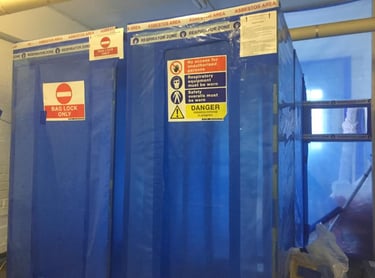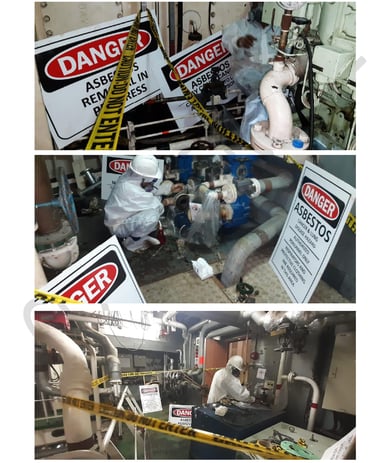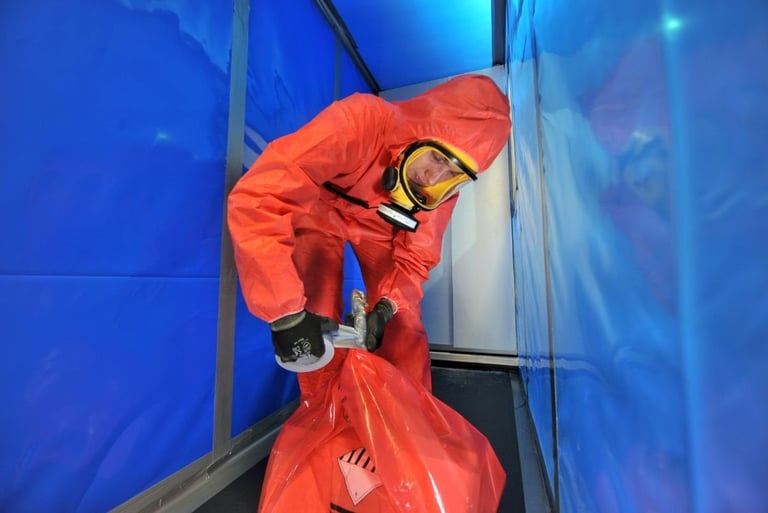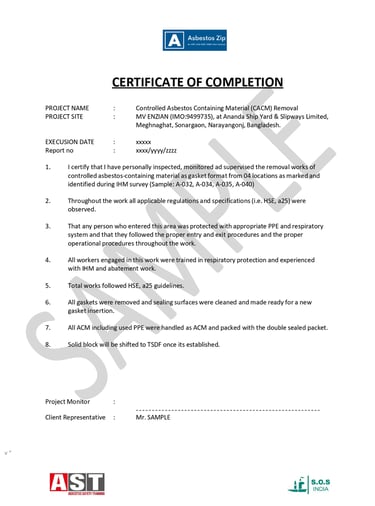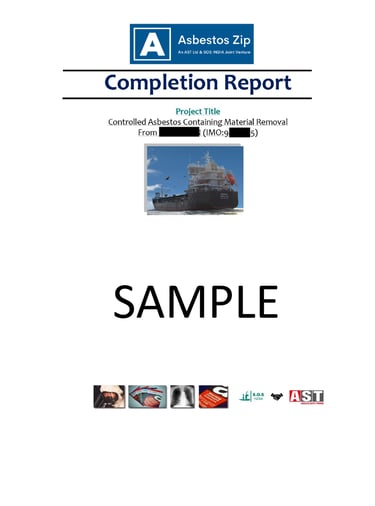Asbestos Removal & Disposal
1. Building Enclosure & setting up NPU
The type of enclosure for asbestos removal or encapsulation will be dependent on the asbestos being worked on or removed. It may be a simple exclusion zone or maybe an elaborate system of enclosures that may incorporate large areas of a factory workspace or office floor. When a full enclosure is required it means that the risk of asbestos fibers being released will exceed the safety levels set by government legislation. Enclosures are built with 1000g polythene and will use the building walls or scaffold framework or be independent structures such as timber stud cubes above service duct entrances. Enclosures are built in homes too to ensure that no asbestos fibers are being spread across the home. It sounds daunting. But it’s all in a day’s work for TES. All questions will be answered when at the planning stage of the work so no one will be left not understanding the basic procedures that we take to ensure your safety.
2. Removal of ACM & Packaging
We ensure that any areas where asbestos is located and due to be disturbed are sealed off using polythene and timber to create an airtight enclosure in order to contain asbestos airborne fibers.
We make sure that any contaminated waste is securely double-bagged and sealed in asbestos waste sacks, appropriately labeled, and safely deposited at a specialist licensed waste disposal site.
Stage 1: Preliminary check of site condition and job completeness
Our analyst will establish the scope of work and ascertain whether it has been carried out accordingly. They will conduct a visual assessment of the site to check that the removal enclosure is intact, that the site decontamination unit is operational and the work area, transit and waste routes are free from unnecessary clutter and any obvious contamination that has arisen as a result of the removal work.
Stage 2: A thorough visual inspection inside the enclosure/work area
Initially, the analyst will inspect the removal area to check for any residual material or fallen debris, but all areas of the enclosure, including the airlocks and baglocks, are debris and dust free.
Testing and analysis for asbestos fibers (including asbestiform fibers that fit the respirable criteria) is then carried out.
Stage 4: Final assessment post-enclosure/work area dismantling.
The analyst will check the more general work for any residual problems, including a revisit of the transit and waste routes
4. Completion Certificate & Report

